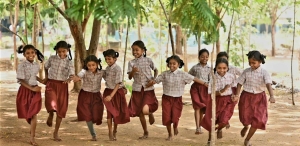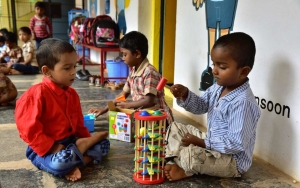Majority of the brain development happens before the age of six. Neuroscience indicates that early preventive intervention is more efficient and produces favourable outcomes than remediation later in life[1]. Development research around the globe shows that investment in early childhood education (ECE) is one of the most effective investments for societal outcomes. With eight crore children in the 3-6 age group in India, strengthening the delivery of ECE becomes a critical piece for the country’s development.
Challenges and Systemic Issues
While both the National Education Policy (NEP) 2020 and National ECCE (Early Childhood Care and Education) Policy 2013 recognise the critical importance of investing in young learners, we find several challenges leading to poor learning levels of children before they enter Grade 1. These challenges include:
- Fragmented Governance: the unclear division of responsibilities between the Ministry of Education (MoE) and the Ministry of Women and Child Development (MWCD) creates confusion and inefficiencies in ECE programme delivery.
- Budget Constraints: insufficient funding allocation limits the ability to hire dedicated educators and develop quality infrastructure.
- Lack of Qualified Teachers: the absence of dedicated qualified ECE educators across the country hampers the quality of early education.
- Enrolment Patterns: parental demand for structured educational environments impacts enrolment, with only one-third of children, aged between five to six years, attending Anganwadis[2]. Many children under the age of six years are enroled in Grade 1 without adequate school readiness.
Addressing these challenges is essential to establishing dedicated pre-primary sections and ensuring qualified educators are in place, forming a foundational solution to enhance ECE in India.
Momentum for ECE in India
India has seen a growing momentum to prioritise ECE in the recent years, despite existing challenges. Both the Ministry of Education and the Ministry of Women and Child Development are making sustained efforts to enhance early childhood education. The National Education Policy (NEP) 2020 underscores the necessity of providing universal, equitable and quality early childhood care and education, emphasising a play-based approach to ensure optimal child development. This policy shift marks a significant turning point in recognising the importance of early education.
The National Curriculum Framework for Foundational Stages (NCF-FS 2022) and the recently released Aadharshila framework establish clear standards for states to develop quality ECE programmes. Furthermore, NITI Aayog has incorporated early education into its annual plans, emphasising key areas for early childhood care and education as part of broader developmental goals under Viksit Bharat @ 2047. These plans prioritise strengthening the Anganwadi system and integrating ECCE with primary education, focusing on quality infrastructure, teacher training and curriculum development. Notably, the total budget allocation for ECE by states increased from approximately ₹900 crores in 2022-2023 to around ₹1,300 crores in 2024-2025 — a 46.75% increment, indicating a growing commitment to improving early education in the country.
State-level Initiatives: Uttar Pradesh as an Exemplar
In 2024, Uttar Pradesh (UP) secured ₹388.97 crore to improve ECE, one of the highest across the country. What is heartening is that, unlike many other states that focus solely on infrastructure, Uttar Pradesh’s budget allocations also encompass budgets allocated for recruiting and training dedicated ECE educators, educator training and teaching and learning materials (TLM), highlighting a comprehensive commitment to enhancing ECE. UP has identified the importance of having dedicated ECE educators to maximise available learning time in pre-primary classrooms. The state has streamlined its recruitment processes, establishing clear qualifications, selection protocols and procurement processes to ensure the hiring of qualified educators.
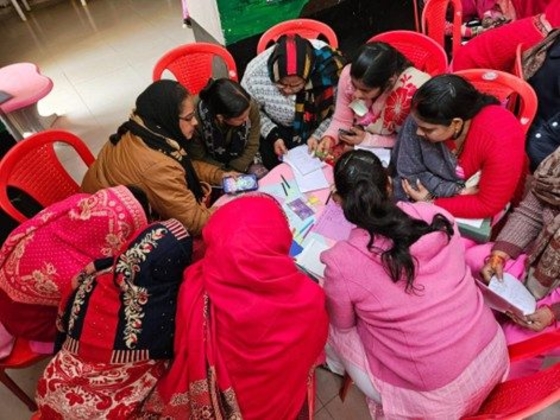
The state is also aligning its programmes with the central NIPUN Bharat Mission, which aims to ensure that children are school-ready by the age of six . To this end, it has mandated the entry for children to Grade 1 to 6 years and established convergence between the Department of School Education and Integrated Child Development Services (ICDS). By declaring 60,137 co-located Anganwadis as Balvatikas, the state places the responsibility for education on the Department of Basic Education while the ICDS focuses on health and nutrition.
- Programmatic Enhancements and Impact
In line with its commitment to early childhood education, Uttar Pradesh has taken significant steps to strengthen programmatic inputs. The state has seen notable success in Grades 1 to 3 by adopting a structured pedagogy approach, which is now being adapted for ECE. For instance, a 12-week school readiness curriculum has been developed for the Balvatika grade (ages 5 to 6) in co-located Anganwadis. This curriculum aligns with the NCF-FS and Uttar Pradesh – State Curriculum Framework, focusing on foundational literacy, numeracy and social-emotional development. It provides educators with a clear and structured plan to prepare children for formal schooling.
The rollout of this curriculum in Aligarh has yielded promising early results. Learning time in classrooms has doubled, with new materials enabling Anganwadi workers (AWWs) to allocate time more effectively across developmental domains — from literacy to play-based learning.
- Positive Feedback from Anganwadi Workers (AWWs)
- 60% of AWWs appreciated the curriculum manual for its clear daily and weekly routines and a well-defined progression of activities.
- 73% of AWWs found that children could easily navigate the workbooks, leading to greater engagement in the classroom.
Qualitative feedback from AWWs highlights the creative and engaging nature of the activities, which maintain children’s interest throughout the school day. One AWW remarked,
“The materials are easier to understand than anything we have used before. All we need to do is focus on teaching.”
Navita Nirmal (Anganwadi Worker, Pala Sahibabad, Aligarh)
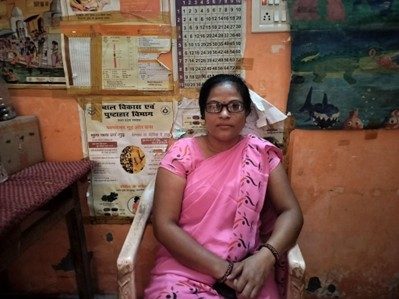
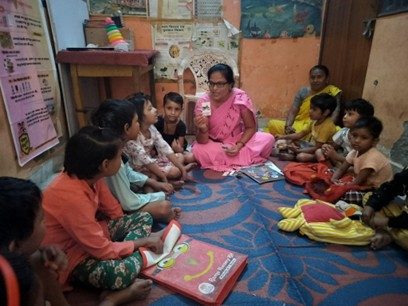
R: Navita Nirmal engaging with the students at Pala Sahibabad Anganwadi Centre in Aligarh, Uttar Pradesh
This experience has provided valuable insights for designing effective ECE programmes, emphasising the importance of practice-based training, instructional videos and reward and recognition systems to build teacher capacity. Simple, user-friendly materials featuring clear text and intuitive visuals are essential to reduce preparation time and help educators focus on delivering effective instruction within their constraints. By building on these experiences, Uttar Pradesh aspires to be a pioneer in realising the vision of the NEP 2020. Learnings from early adopters like Uttar Pradesh can help accelerate the country’s journey toward strengthening ECE, ultimately delivering quality early learning for all children in the country.
Through this landscaping of the current state of ECE in India, we have focussed on the positive momentum for moving from policy to practice with states like UP emerging as exemplars. To realise the full potential of ECE, continued investment, comprehensive programmatic enhancements and a commitment to addressing systemic barriers are essential.
By prioritising early childhood education and realising its pivotal role as step zero of foundational literacy and numeracy, India can ensure that all children are equipped for success in their educational journeys and beyond.

